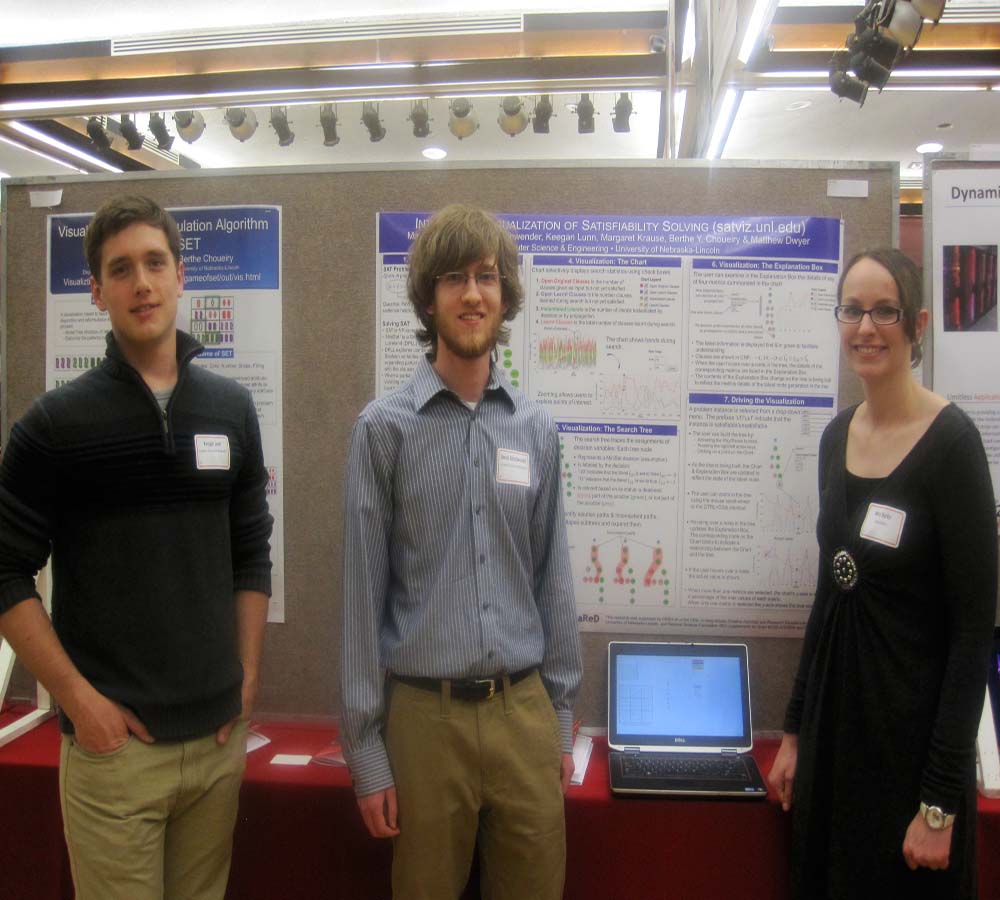
On Thursday, April 11, some of our own CSE students participated in the Undergraduate Research Fair in the Nebraska Union. The fair gives students a chance to highlight their research to the UNL and Lincoln community. The following is a summary of the undergraduate poster session from CSE participants.
Carson Crawford:
"My research project was to create dynamic lighting and visualization for the RED cluster computer (which is underneath the stadium in the Schorr Center). To this end, I created LED strips and custom rack panels to add to each rack of the cluster. The multiple LED strips are essentially connected into one long strip across all the racks that is controlled by an Arduino Mega. I also wrote code that maps metrics such as temperature and load to these LEDs. With this installation, people touring the facility can be treated to a fantastic light show and system administrators can easily see the current status of the cluster."
"The research process was a lot of fun for me. The project covered a broad range of hardware and software so I got to learn many new skills. For instance, I had to create custom rack panels with power and data connectors for each rack of the cluster. To do this, I had to go to the Physics student workshop in Jorgensen Hall and learn how to use a mill, something that many mechanical engineers aren't even required to do. On the other end of the spectrum, I had to dive deep into the Arduino library that runs the LED strip to examine its memory usage efficiency and its basic operation. Overall, I really enjoyed working towards creating a physical product that will exist long (hopefully) after I graduate and that can serve as a launchpad upon which other projects can be built."
Daniel Geschwender:
"My project dealt with using Machine Learning to improve the solving of Constraint Satisfaction Problems. The Constraint Satisfaction Problem is a framework for modeling constrained combinatorial problems. Hardware verification, scheduling, and resource allocation are real world examples of this type of problem. There are many algorithms that can be used to simplify the problem and make it easier to solve. However, some are run better on certain types of problems than others. We use Machine Learning to build a classifier that will observe features of a problem and then predict which algorithm would be the best to use. Our classifier is reasonably accurate and early results seem good."
"I began working on the project as part of a final assignment for Dr. Scott's Machine Learning class last fall. It was a continuation of some work done by graduate students Shant Karakashian and Robert Woodward. I started out by trying to replicate their results and from there I branched out with a handful of new experiments. They've both been a lot of help so far. The results we have now are taken from a very small set of data, so the next step is to conduct experiments on a much larger scale. It's been pretty cool to learn how to run huge batches of jobs on the cluster computers!"
Caleb Berggren:
"My project is dealing with wireless power transfer and its applications on UAVs (Unmanned Aerial Vehicles). Wireless power uses magnetic induction as the driving physical phenomenon. We are using resonating coils to achieve better power transfer over greater distances. By mounting a pair of coils on a UAV, we will be able to provide power to sensors in a remote location. Or, if the technology advances, wireless charge a fleet of UAVs in a landing zone."
The Research Fair is a biannual campus-wide celebration of research and creative activity that is held each semester. Contact any CSE faculty member if you're interested in participating in academic research.